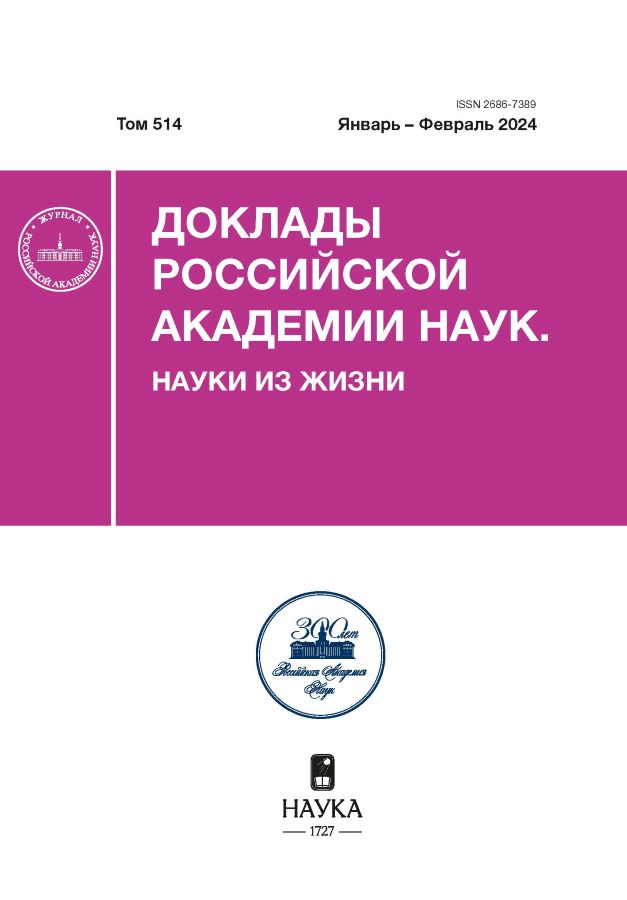New type of gland discovered in cestodes: neurosecretory neurons release a secret into the fish host
- Autores: Biserova N.M.1, Kutyrev I.A.2, Malakhov V.V.1
-
Afiliações:
- Lomonosov Moscow State University
- Institute of General and Experimental Biology, Siberian Branch of the Russian Academy of Sciences
- Edição: Volume 514, Nº 1 (2024)
- Páginas: 16-20
- Seção: Articles
- URL: https://rjpbr.com/2686-7389/article/view/651456
- DOI: https://doi.org/10.31857/S2686738924010039
- EDN: https://elibrary.ru/LAGDLV
- ID: 651456
Citar
Texto integral
Resumo
In 5 species of cestode plerocercoids parasitizing fish, free endings of peripheral neurosecretory neurons were found in the tegument in the ultrastructural study. These free terminals secreted vesicles on the tegument surface and into the host body. An increase in secretion under the influence of the blood serum of a fish host has been experimentally shown. In the body of cestodes, neurosecretory neurons (NN) form paracrine-type contacts near the cell membranes of the frontal glands, tegument, and muscles, performing the function of endocrine glands. Simultaneously, NN function as exocrine glands and secrete so-called manipulative factors that influence the physiology of the host.
Palavras-chave
Texto integral
Sobre autores
N. Biserova
Lomonosov Moscow State University
Autor responsável pela correspondência
Email: nbiserova@yandex.ru
Rússia, Moscow
I. Kutyrev
Institute of General and Experimental Biology, Siberian Branch of the Russian Academy of Sciences
Email: nbiserova@yandex.ru
Rússia, Ulan-Ude
V. Malakhov
Lomonosov Moscow State University
Email: nbiserova@yandex.ru
Academician of the RAS
Rússia, MoscowBibliografia
- Berger C. S., Laroche J., Maaroufi H., et al. The parasite Schistocephalus solidus secretes proteins with putative host manipulation functions // Parasites Vectors. 2021. V. 14. P. 436.
- Talarico M., Seifert F., Lange J., et al. Specific manipulation or systemic impairment? Behavioural changes of three-spined sticklebacks (Gasterosteus aculeatus) infected with the tapeworm Schistocephalus solidus // Behav. Ecol. Sociobiol. 2017. V. 71. P. 1–10.
- Kutyrev I. A., Biserova N. M., Mazur O. E., et al. Experimental study of ultrastructural mechanisms and kinetics of tegumental secretion in cestodes parasitizing fish (Cestoda: Diphyllobothriidea) // J. Fish Dis. 2021. V. 44 (8). P. 1237–1254.
- Kuperman B. I., Davydov V. G. The fine structure of frontal glands in adult Cestodes // Int. J. Parasitol. 1982. V. 12 (4). P. 285–293.
- McCullough J.S., Fairweather I. The fine structure and possible functions of scolex gland cells in Trilocularia acanthiaevulgaris (Cestoda, Tetraphyllidea) // Parasitol. Res. 1989. V. 75. P. 575–582.
- Brunanská M., Fagerholm H. P., Gustaffson M. K.S. Ultrastructure studies of Proteocephalus longicollis (Cestoda, Proteocephalidea): transmission electron microscopy of scolex glands // Parasitol. Res. 2000. V. 86. P. 717–723.
- Mustafina A. R., Biserova N. M. Pyramicocephalus phocarum (Cestoda: Diphyllobothriidea): the ultrastructure of the tegument, glands, and sensory organs // Invertebrate Zoology. 2017. V. 14 (2). P. 154–161.
- Biserova N. M., Mustafina A. R., Raikova O. I. The neuro-glandular brain of the Pyramicocephalus phocarum plerocercoid (Cestoda, Diphyllobothriidea): immunocytochemical and ultrastructural study // Zoology (Jena). 2022. V. 152. P. 1–17.
- Webb R.A, Davey K. G. Ciliated sensory receptors of the unactivated metacestode of Hymenolepis microstoma // Tissue and Cell. 1974. V. 6 (4). P. 587–598.
- Fairweather I., Threadgold L. T. Hymenolepis nana: the fine structure of the adult nervous system // Parasitology. 1983. V. 86 (1). P. 89–103.
- Okino T., Hatsushika R. Ultrastructure studies on the papillae and the nonciliated sensory receptors of adult Spirometra erinacei (Cestoda, Pseudophyllidea) // Parasitol. Res. 1994. V. 80. P. 454–458.
- Biserova N. M., Gordeev I. I., Korneva J. V. Where are the sensory organs of Nybelinia surmenicola (Trypanorhyncha)? A comparative analysis with Parachristianella sp. and other trypanorhynchean cestodes // Parasitol. Res. 2016. V. 115. P. 131–141.
- Kutyrev I. A., Biserova N. M., Olennikov D. N., et al. Prostaglandins E2 and D2-regulators of host immunity in the model parasite Diphyllobothrium dendriticum: An immunocytochemical and biochemical study // Mol. Biochem. Parasitol. 2017. V. 212. P. 33–45.
- Webb R. A. Evidence for neurosecretory cells in the cestode Hymenolepis microstoma // Can. J. Zool. 1977. V. 55 (10). P. 1726–1733.
- Specian R. D., Lumsden R. D., Ubelaker J. E., et al. A unicellular endocrine gland in cestodes // J. Parasitol. 1979. V. 65 (4). P. 569–578.
- Gustafsson M. K.S., Wikgren M. C. Release of neurosecretory material by protrusions of bounding membranes extending through the axolemma in Diphyllobothrium dendriticum (Cestoda) // Cell Tissue Res. 1981. V. 220. P. 473–479.
- Liu B., Wakuri H., Mutoh K., et al. Ultrastructural study of neurosecretory cells in the nervous system in the cestode (Taenia hydatigena) // Okajimas Folia Anat. Jpn. 1996. V. 73 (4). P. 195–204.
- Terenina N. B., Poddubnaya L. G., Tolstenkov O. O., et al. An immunocytochemical, histochemical and ultrastructural study of the nervous system of the tapeworm Cyathocephalus truncatus (Cestoda, Spathebothriidea) // Parasitol. Res. 2009. V. 104, P. 267–275.
Arquivos suplementares











